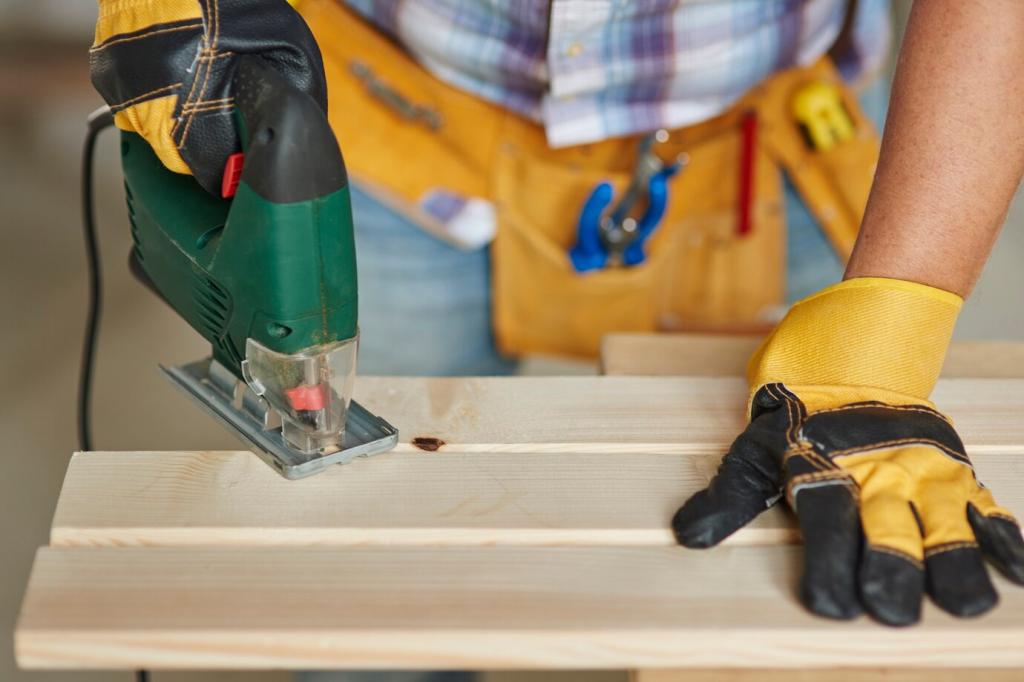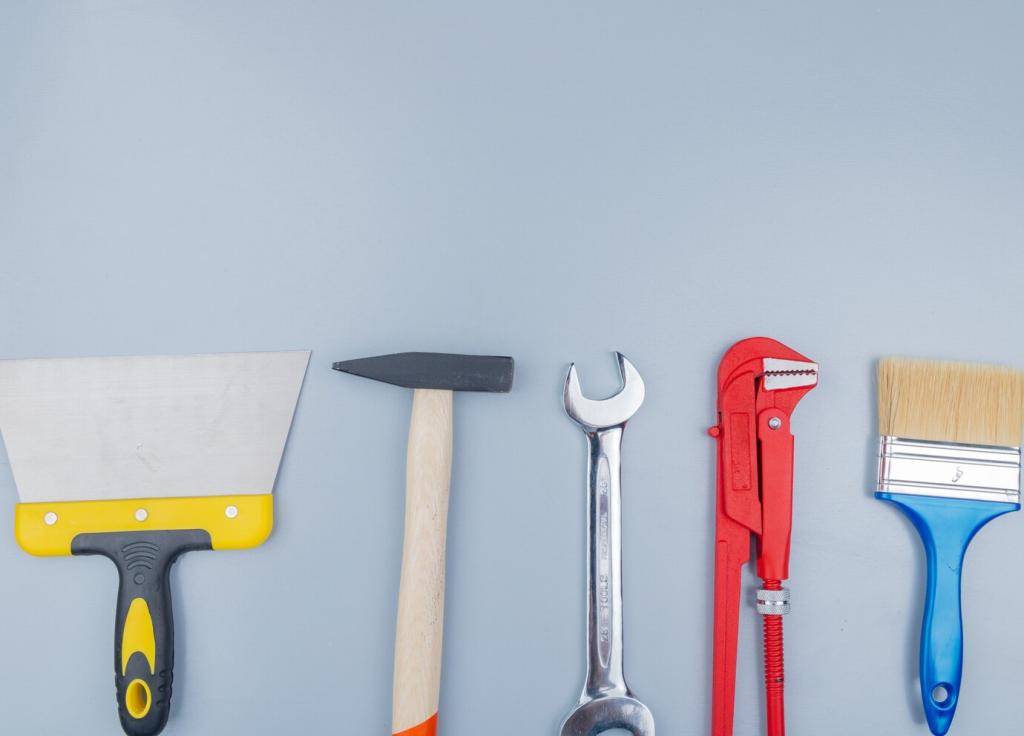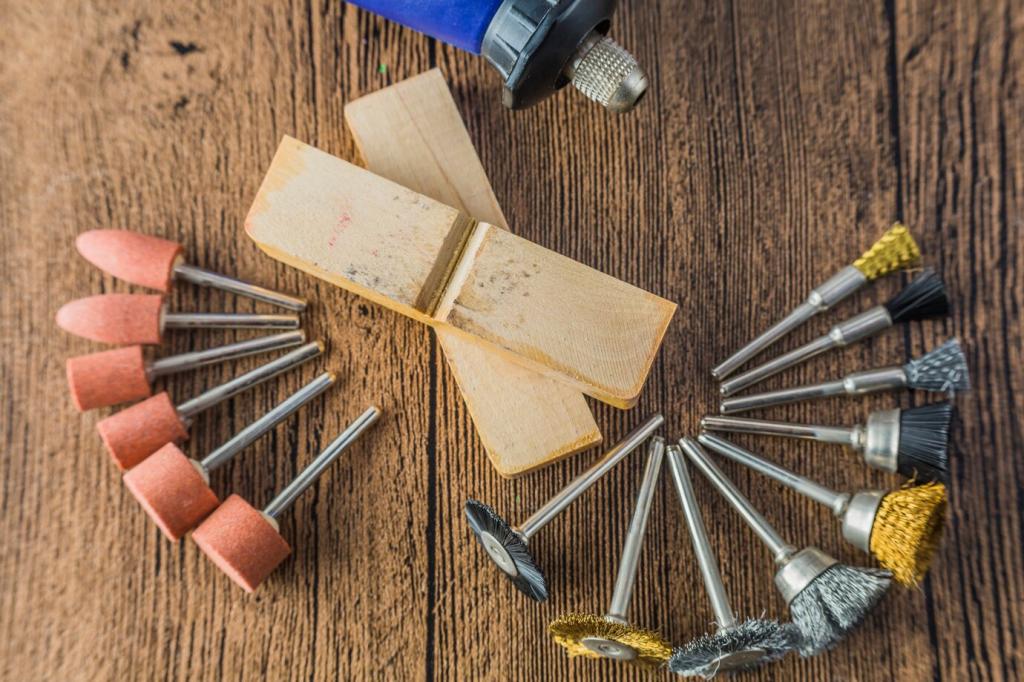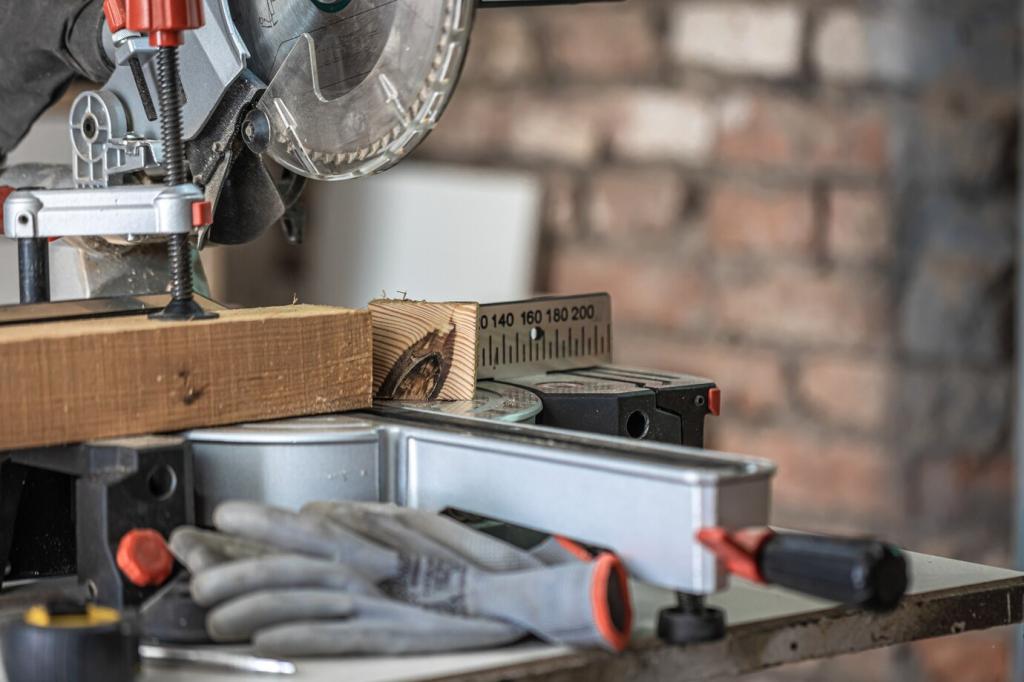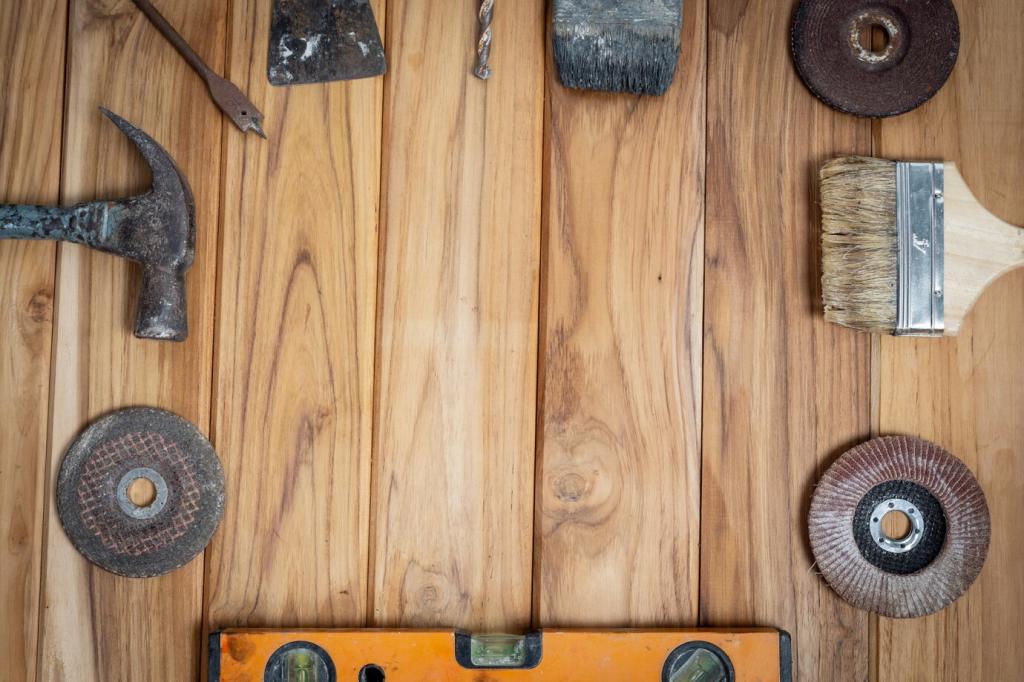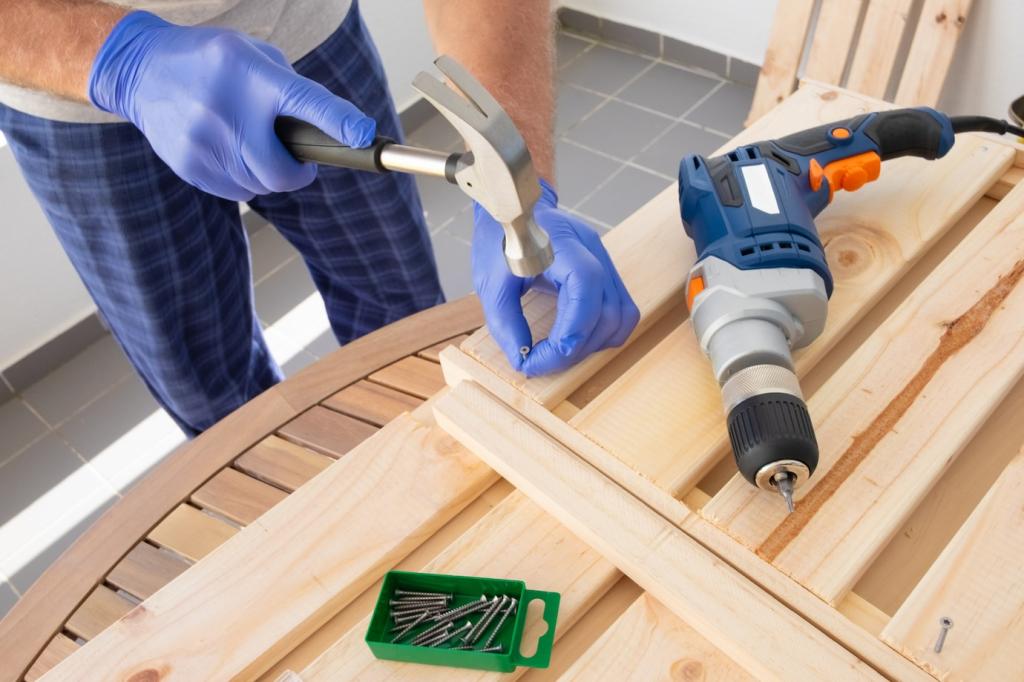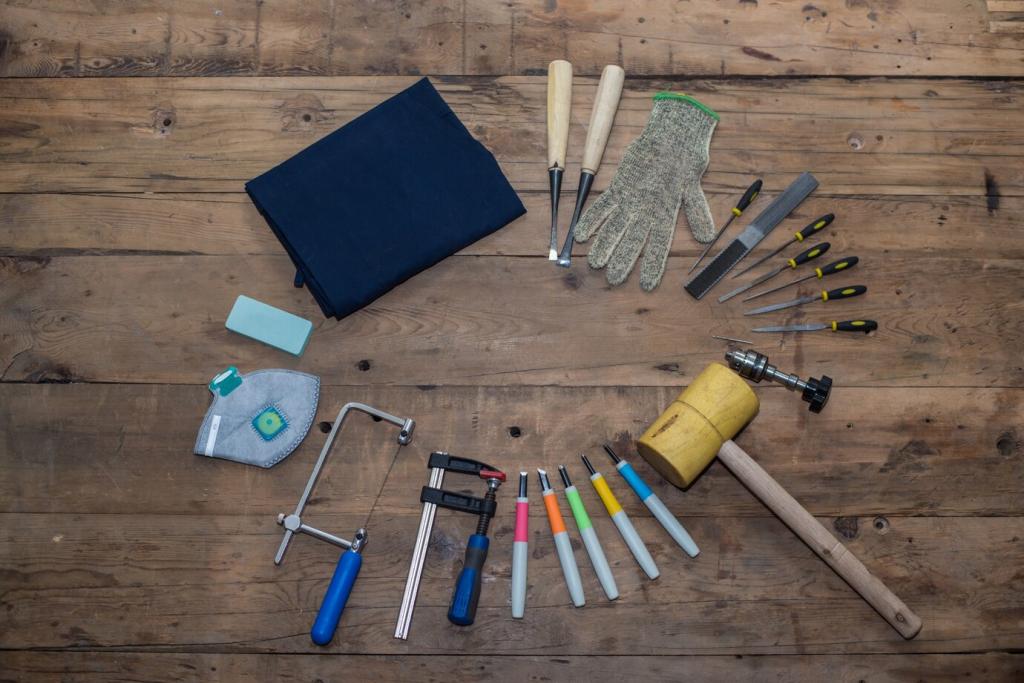Care and Maintenance: Keep Your Sanding Tools Performing
A crepe cleaning block unclogs belts and discs in seconds, restoring bite. Tap dust from sheets and rotate disc positions to avoid hot spots. When sanding tools cut cleanly, you press less, generate less heat, and preserve your surface. Replace abrasives at the first hint of burnishing rather than wasting time and wood.
Care and Maintenance: Keep Your Sanding Tools Performing
Hook‑and‑loop pads harden, tear, and lose grip. Inspect them often; a fresh pad keeps discs flat and swirls at bay. For curved work, add a soft interface pad to your sanding tools to cushion contours. Replace worn platens on belt sanders before they skew planes, and your finishes will thank you quietly.

